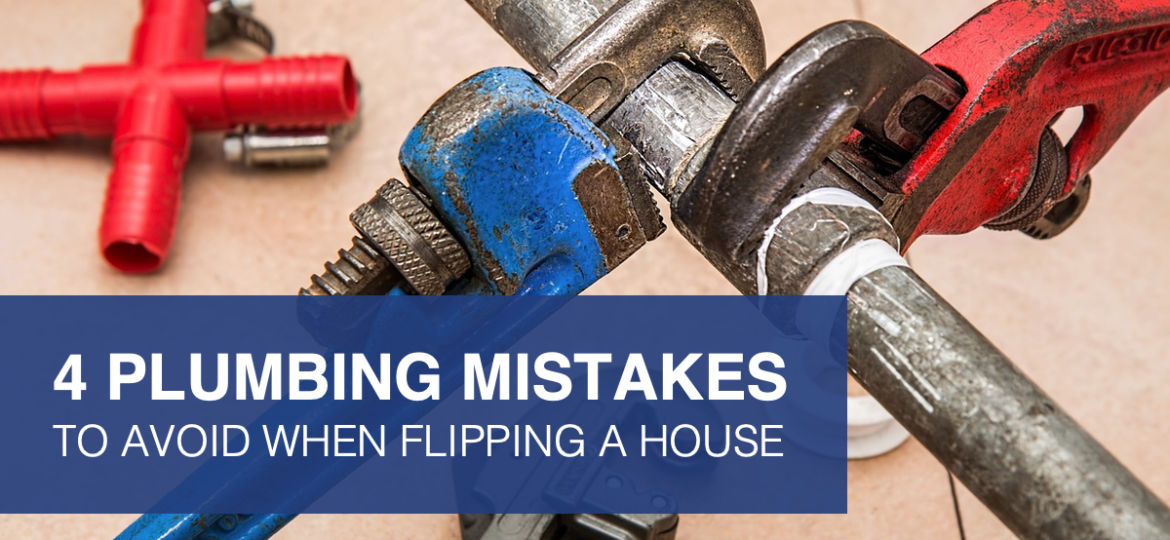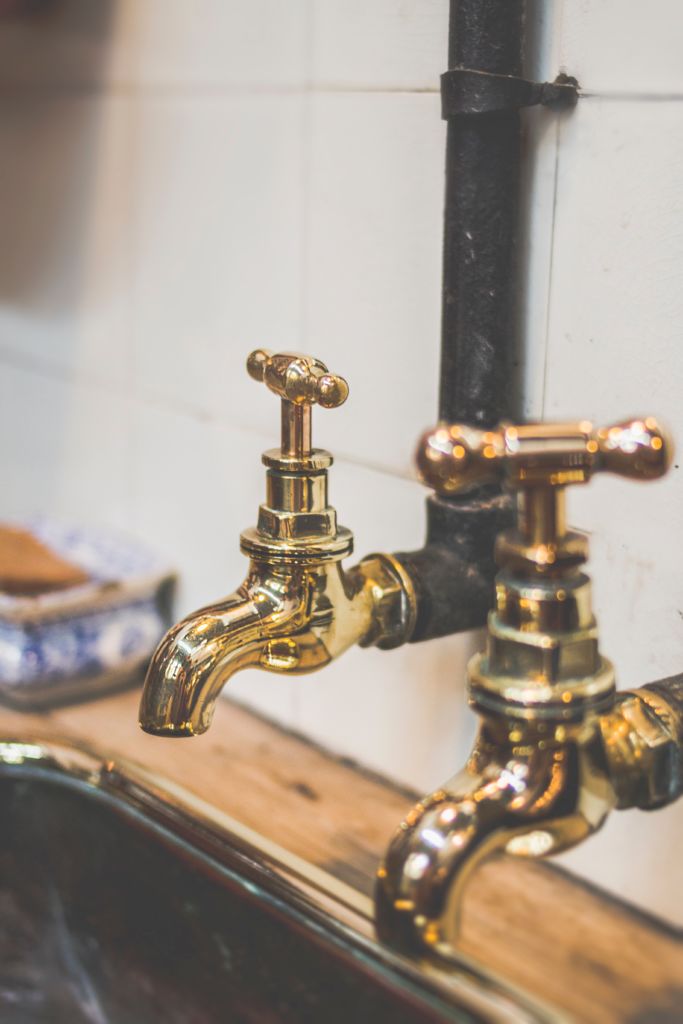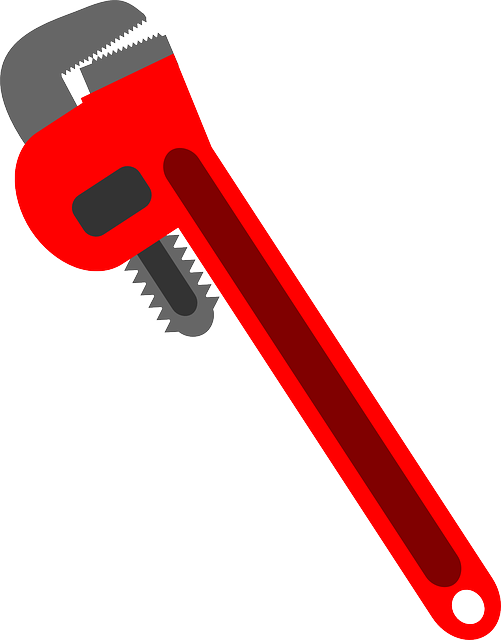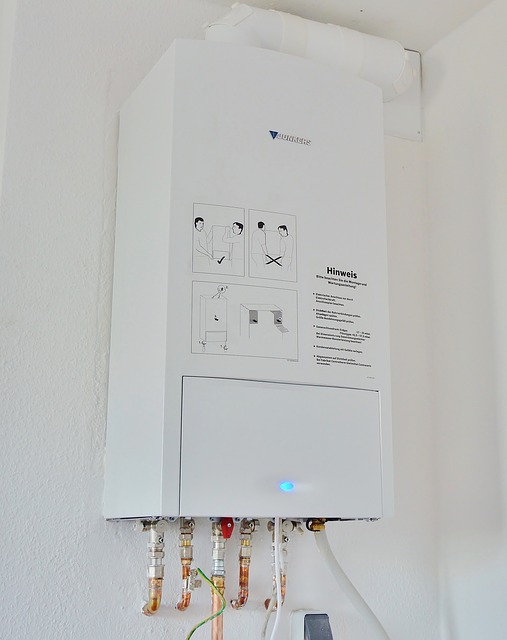
4 Plumbing Mistakes to Avoid When Flipping a House

As anyone who has remodeled a home can tell you, the renovation TV shows make it look too easy. Flipping a home is hard work. However, the reason that so many people get into the home-flipping game is because the results of that work can often be worth it. According to a report from CNBC, the average gross return on investment for such projects hovers around 50%. In other words, if you are ready to invest the time, money, and sweat into such a project, you could reap some huge monetary benefits.
However, there are challenges for both first-time and experienced home flippers. Every home is different and will present its own difficult patches. The allowable margin for error is relatively small: after all, unlike a homeowner who will invest almost any amount of money to fix or maintain their home, flippers need to stick to a tight budget and deadline.
Plumbing projects in a flip are often the place where a lot can go wrong relatively quickly. In this article, we’ll review some of the most common mistakes flippers make when working with a home’s plumbing, and what precautionary measures they can take to avoid disaster.
Using the Wrong Tools
Many home flippers—especially first-time flippers—start a project with a good set of tools on-hand to complete the project. Unfortunately, these are often general-use tools: hammers, pliers, wrenches, and more. Plumbing repairs and upgrades often require a special subset of tools. For example, many corroded pipes can only be safely unthreaded with the use of PVC pipe pliers, which are not a common part of the home flipper’s toolbox.

If you’re planning on doing your own plumbing for a house flip, make sure that you have all the proper tools you need before getting started. If you’re planning on flipping homes in the future, it may make sense to invest in a kit of plumber’s tools or look into tool “libraries” or exchanges that let you borrow what you need when you need it. These are a great resource as you get started!
Going DIY Instead of Hiring a Professional
This, without a doubt, is the biggest and most-common mistake remodelers make when attempting to fix or improve the plumbing for a house flip. It’s the perfect storm for a plumbing disaster: a remodeler looking to keep costs low, in a home they’re relatively unfamiliar with, working on a deadline. While there are many parts of your fixer-upper that you can tackle yourself, always leave critical plumbing work—especially re-piping or fixing leaks—to the experts.

When you choose to do your own plumbing work, you’re often playing with fire—or, well, water. Take re-piping, for instance. Many remodelers lack the tools or experience needed to effectively replace pipes in a long-lasting, safe way. If the work is done incorrectly, it could cause major issues and cost overruns well before you re-list the home. In other words, trying to take a shortcut by avoiding hiring a pro could lead to you taking a loss on the home flip.
Doing Major Work Without a Permit

This goes hand-in-hand with hiring professionals for your project, but don’t forget to submit all the proper permits for your plumbing remodeling work. While the upfront costs of a permit do eat into your overall budget, they’re well worth the cost down the road. Un-permitted work can drastically lower the resale value of your flip or turn off buyers and realtors entirely. Many buyers may ask themselves if they can trust the quality of your work in other areas of the home.
If you decide to take our advice and get a professional to assist with some of the more complicated aspects of your flip, make sure that they, too, pull permits and are a generally trustworthy team to work with. Again, it can’t be emphasized enough: cutting corners when it comes to doing the work right will come back to bite you and sink your flip.
Overlooking the Small Things
When you’re dealing with a major overhaul of the plumbing for a house flip, it’s easy to lose sight of the small things. But these often are the difference between a prospective buyer making an offer and walking away. Here are a few examples of relatively minor upgrades that people tend to notice:

- Water Heater: A new water heater is not a major investment, in the grand scheme of things. However, if your flip has an ancient system, that could be a major turnoff for buyers looking for a move-in-ready property. If your budget doesn’t have the cash for a new water heater, at least consider having the anode rod replaced to extend its lifespan. Or, if you want to make a big first impression on a buyer, upgrade to a tankless water heater. They are faster, more efficient, and a significant space saver.
- Faucets & Fixtures: Ok, you completely remodeled the shower. It looks great! You may be disappointed to learn, upon having people tour the home, that they don’t like the shower head in the master bathroom. Items like shower heads, faucets, and fixtures are relatively inexpensive, but add a degree of completion to your bathroom or kitchen remodel. Don’t neglect them!
- Dishwashers: Dishwashers are another relatively inexpensive appliance that buyers will really appreciate having as part of the remodeled home.
Get the Most Out of Your Flip

As mentioned earlier, every home you flip will present its own set of challenges and obstacles. Even veteran flippers regularly encounter new situations and problems they’ve never seen before. The good news is that with each house you flip, you’ll become a more experienced and equipped remodeler. Keep these tips in mind, and you’ll be well on your way to safely and professionally remodeling your home and getting the best-possible return on investment when you sell.
Sandra Wood is the communications specialist atAllbritten, a professional home energy and plumbing company in Fresno, CA. Sandra has been working in the home repair industry for almost 10 years and she really enjoys researching and writing about anything related to home repairs.

